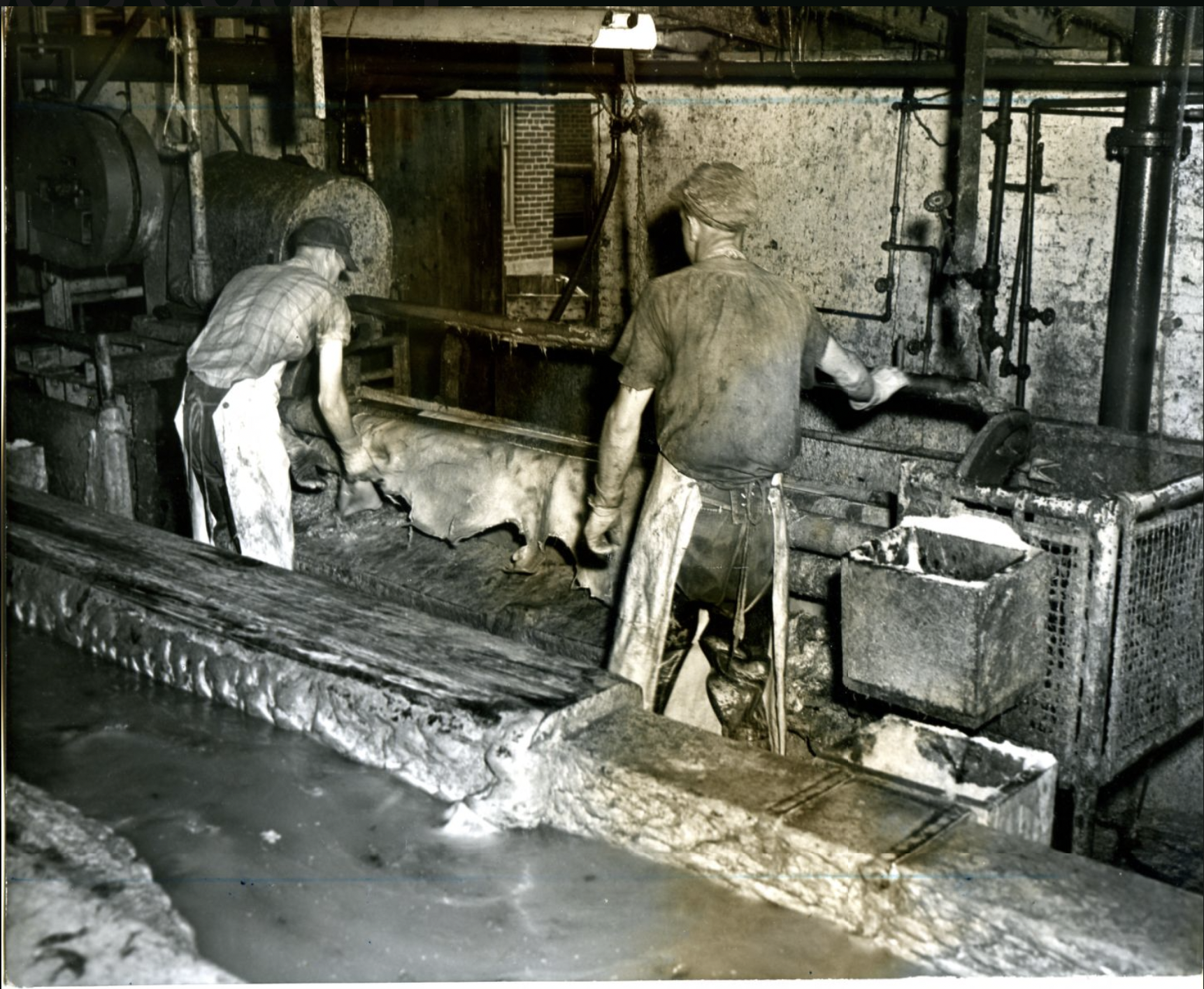During our leather craft workshop this part of the discussion always yields the most questions, so lets dive in!
Tanning is a necessary step in the leathercrafting process. The tanning process stabilizes the protein of the raw hide or skin, preventing putrefaction, and preparing it for a wide variety of end applications. There are several processes that need to take place before tanning can occur, but we will save those for another post.
During the tanning process, the hides undergo a remarkable transformation as they come into contact with tannins derived from natural plant sources. These plant-based tannins, extracted from sources such as tree barks, leaves, and fruits, play a crucial role in turning rawhide into durable and beautiful leather.
The hides are immersed in large vessels containing a solution of water and vegetable tannins. As the hides soak in this tannin-infused bath, a chemical reaction occurs between the tannins and the collagen fibers present in the hide.
Collagen, a fibrous protein, is the main component responsible for the strength and structure of animal hides. Tannins have a natural affinity for collagen, and during the tanning process, they bind to the collagen fibers, stabilizing and strengthening them.
The tannins react with the collagen through a process called cross linking. This chemical reaction creates a network within the hide, making it more resistant to heat, water, and microbial degradation. The result is a transformation of rawhide into leather, with improved strength, flexibility, and durability.
Vegetable tanning is known for its slow and deliberate process, allowing the tannins to gradually penetrate the hide over a period of several weeks. This slow absorption ensures deep and thorough tanning, resulting in leather with excellent physical properties and a unique character.
One of the remarkable qualities of vegetable-tanned leather is its ability to age beautifully and develop a rich patina over time. As the leather is exposed to sunlight, air, and the natural oils from our skin, it undergoes subtle color changes and develops a unique character that tells the story of its use and journey.
The tanning process is a testament to the skill and craftsmanship of leather artisans who carefully monitor and adjust the tanning parameters to achieve the desired results. Each batch of leather may require different tanning times and concentrations of tannins, allowing for a customized approach to creating distinctive leather products.
By embracing vegetable tanning, we not only experience the beauty and durability of this natural material but also contribute to a more sustainable and eco-friendly industry. The use of renewable plant sources for tannins, along with minimized chemical usage and biodegradability, makes vegetable-tanned leather a responsible choice for those seeking ethical and environmentally conscious products.
So, let’s celebrate the tanning magic and appreciate the artistry behind the creation of vegetable-tanned leather, a true testament to the harmonious relationship between nature, craftsmanship, and timeless elegance.


